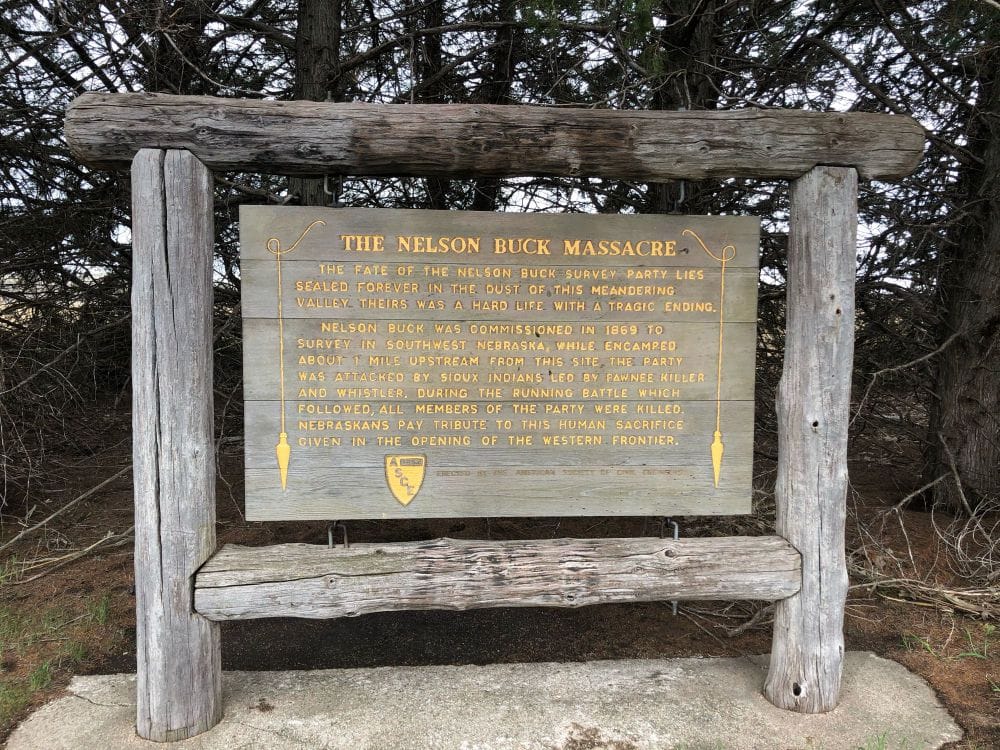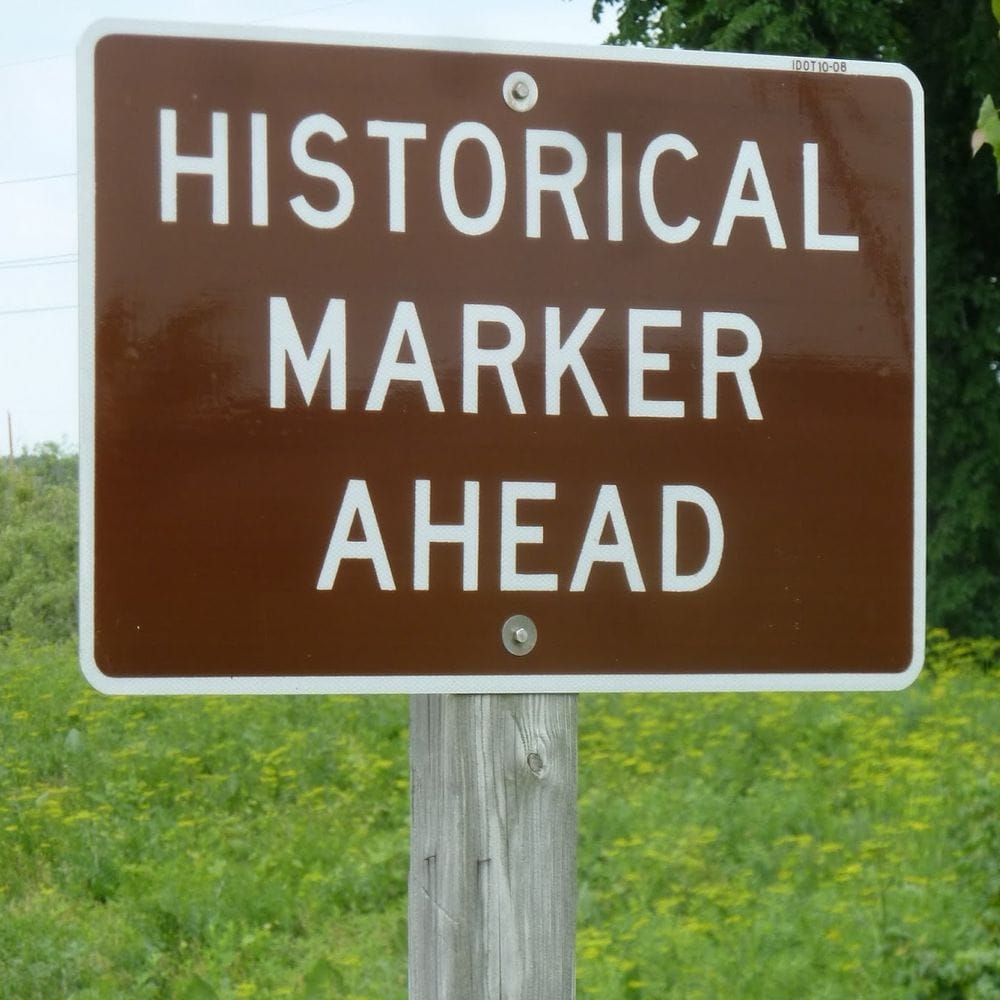Why 'Historical Marker Ahead' Exists, with Special Thanks to a Lonely Wooden Sign in Southwest Nebraska
Historical markers matter -- especially as history is increasingly attacked in the classroom.

Welcome to Historical Marker Ahead! I started it by sharing photos and pithy commentary about markers on a BlueSky account, and now I'm here. And so are you.
Why bother to do this? The idea hit me in April 2021, when I stopped at the Nelson Buck Massacre marker east of Danbury, Neb. , near the state line with Kansas in southwest Nebraska. Of course, I'd long had a fascination with historical markers, and seeing so many as I drove the rural highways required to get from Chicago to my son's then-home in Garden City, Kan., helped feed it. (That's how I got to Danbury.) And thanks to reading James Loewen's "Lies Across America," I also knew to take the accuracy and completeness of what was said on them with, as my late father would say, the proverbial grain of salt.
The Nelson Buck Massacre marker seemed like a perfect distillation of what drove Loewen to write a book hating on markers after spending his childhood being dragged to them. The incident was largely unknown outside the immediate area, and at this point probably not well known within it. Its few words were devoted to the point of view of white people, white males in particular, claiming that space forever more in their name.
"Erecting highway markers that bear testimony to a somewhat distant and obscure past is often an artificial attempt at infusing history into the landscape and represents obscure and individual forms of ancestor worship," wrote French researcher Pierre Bardet in a 2012 paper in the online journal Miranda, "and, as such, perfect examples of what history is not."
Here is how the marker reads:
The fate of the Nelson Buck survey party lies sealed forever in the dust of this meandering valley. Theirs was a hard life with a tragic ending. Nelson Buck was commissioned in 1869 to survey in Southwest Nebraska. While encamped about 1 mile upstream from this site the party was attacked by Sioux Indians led by Pawnee Killer and Whistler. During the running battle which followed, all members of the party were killed. Nebraskans pay tribute to this human sacrifice given in the opening of the Western frontier.
The marker's copy is in yellow though its prose is purple. A quick search (often to other problematic copy) fills in a few holes:
- Buck and his team, from Illinois, despite being warned about how dangerous their mission would be (hey, how would you react if someone came to your land to survey it assuming their ownership!) left their assigned fort with little weaponry, impatient about waiting for their arms request to be fulfilled.
- The attack wasn't in cold blood. The survey team, with what guns they had, shot at and killed Natives first.
- The whole survey party wasn't killed near this site. Six of them were, but four others were chased into another county before they were killed.
- Not only do Nebraskans not pay tribute in any formal way to this "human sacrifice," but the American Society of Civil Engineers, which put up the marker in 1968, doesn't have any reference to Nelson Buck on its national website. The Nebraska ASCE chapter has in its notes that when it was informed of vandalism at the marker site, "no one on the board had any recollection or information" that it had a plaque there.
You're not exactly making the case for paying attention to markers, buddy. Despite everything I just laid out, historical markers, accurate or not, are important. That's because they are an extremely accessible form of history, and are a community-based imprimatur (love that word) of what and who matters.
Yes, many markers are inaccurate in facts, and more often inaccurate in framing. But in recent years communities have ramped up using markers to tell the previously untold stories of marginalized populations. As schools turn toward dubious sources of history or outright whitewashing, historical markers are becoming an important, and relatively permanent, first source in the journey to learn what has happened and how it shapes us. There are enough markers that in your travels you can start to put stories together; the Historical Marker Database says users have uploaded 225,000 markers (some outside the U.S.) to its site.
My BlueSky account and this newsletter won't be serious all the time – there's a lot of fun to be had with markers. As I dive into them, I'll share photos of what I've taken, and what those markers have to say about the time and events they talk about – and what they have to say about the time and events around when they were erected. I doubt the Nelson Buck Massacre language would stand if it were put up today, even in, shall we say, this environment.
So please come join me as we check out, and learn about, historical markers!
